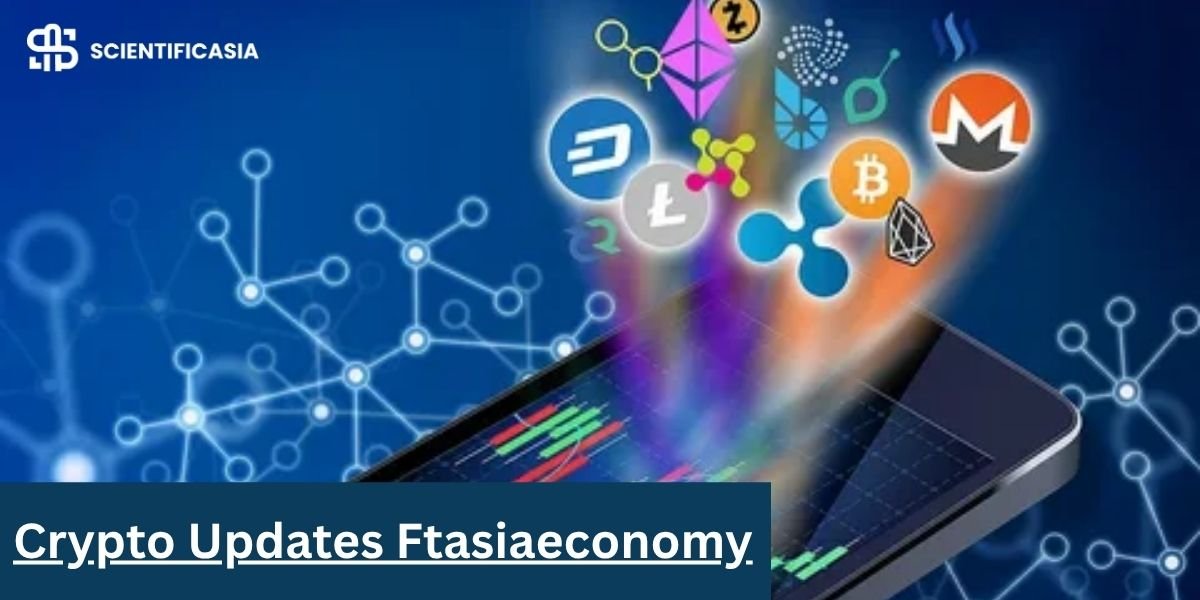The world of digital assets never seems to stand still, does it? Just when you think you have a handle on things, a major market shift happens or a new set of rules comes into play. Nowhere is this truer right now than in Asia, which is rapidly becoming the epicenter for cryptocurrency regulation and adoption. It’s an exciting, sometimes confusing, time for everyone involved—from the casual investor to the global financial institution. A detailed analysis of the latest crypto updates ftasiaeconomy is essential for navigating this environment.
So, what exactly is happening on the ground? Why are Asian governments suddenly focused on digital currencies, and what does this mean for the stability and future of your portfolio? Let’s dive into the evolving landscape, paying special attention to the big players like Hong Kong, South Korea, and Singapore, and how they are trying to bring stability to the most volatile assets of our generation: stablecoins.
The Big Regulatory Push: Asia’s New Rulebook
For a long time, the crypto world felt like the wild, wild west. Now, Asian financial hubs are determined to change that, pushing out significant regulatory frameworks throughout 2025. It feels like a big step towards maturity for the industry, but it also raises a natural question: Can you really regulate an asset designed to be decentralized?
The approach varies by country, but the overall theme is clear: investor protection and financial stability are the top priorities.
Stablecoins: The Focus on Financial Anchors
Think of stablecoins—like a digital US dollar—as the bridges between the traditional financial world and the decentralized one. They’re supposed to be stable, but the collapse of certain algorithmic stablecoins in the past few years showed just how fragile that bridge can be. That’s why stablecoin regulation is the hottest topic in Asia right now.
- Hong Kong’s Stablecoin Ordinance: Hong Kong, aiming to be a major global virtual asset hub, has been particularly active. The Hong Kong Stablecoin Ordinance, which came into effect on August 1, 2025, is a game-changer. It establishes a licensing regime for stablecoin issuers, demanding strict requirements. Issuers now need to satisfy the Hong Kong Monetary Authority (HKMA) that they have sufficient reserves, strong risk management, and must be able to process redemption requests quickly—often within one business day. It’s a move designed to make the Hong Kong dollar-referenced stablecoin a gold standard globally.
- South Korea’s Final Phase: Not to be outdone, South Korea is in the final stages of preparing its own stablecoin legislation. The plan, which is expected to be submitted to the National Assembly before the end of 2025, includes an issuer licensing system and, importantly, a requirement for reserves to be held at over 100% in high-liquidity assets, like government bonds or bank deposits. This level of caution reflects a genuine commitment to preventing future financial shocks. (Source 2)
- Singapore’s Framework: The Monetary Authority of Singapore (MAS) is also working hard, having published a stablecoin regulatory framework in 2023 that is currently being formalized into law. Their goal is simple: to clearly separate the highly volatile, speculative crypto assets from the well-regulated stablecoins that can actually be used for payments and other services with a high degree of confidence.
Key Regulatory Requirements for Stablecoins in Asia (2025)
| Jurisdiction | Key Regulatory Action (2025) | Reserve Requirement Focus | Primary Goal |
| Hong Kong | Stablecoin Ordinance (Effective Aug 2025) | Fully backed by high-quality, liquid assets. | Establish a global VA hub with high investor protection. |
| South Korea | Draft Legislation (Expected Q4 2025) | Over 100% reserves in highly liquid assets (e.g., bank deposits). | Prevent financial shocks and ensure value stability. |
| Singapore | Formalizing 2023 Framework (Ongoing) | High degree of value stability for regulated stablecoins. | Differentiate safe payment tokens from speculative assets. |
The Impact of Institutional Moves
Regulation isn’t the only thing shaping the market. Big business moves are also signaling a new era of institutional participation, perhaps making the market feel a bit more… traditional.
The Binance-GOPAX Case Study
Consider the high-profile return of the world’s largest crypto exchange, Binance, to the South Korean market. After facing significant global regulatory challenges and exiting the market in 2021, Binance successfully finalized its long-delayed acquisition of the local exchange GOPAX in October 2025.
This acquisition wasn’t just about a company making a comeback; it’s a telling case study.
- Compliance as Currency: The final approval by South Korea’s Financial Intelligence Unit (FIU) came after Binance addressed its global regulatory concerns and replaced core executives. This highlights a crucial point: Compliance has become the non-negotiable price of entry into major Asian markets.
- Market Competition: With Binance now back, leveraging its global liquidity and advanced trading infrastructure through a regulated local entity like GOPAX, competition with local giants like Upbit and Bithumb is expected to intensify. For Korean traders, this likely means better pricing and access to a wider variety of assets—a net positive, I think.
This move by Binance into a tightly regulated yet highly active market suggests that even the biggest global players are prioritizing compliance and seeking regulated avenues to grow their user base in Asia.
Visualizing Market Growth
The appetite for crypto in Asia is huge. According to a Chainalysis report from September 2025, the Asia-Pacific (APAC) region showed strong growth in cryptocurrency activity from July 2022 to June 2025. In fact, monthly on-chain value received grew from about $81 billion to a peak of $244 billion by December 2024. That’s a threefold increase in just 30 months!

Expert Opinions and The Road Ahead
What do the people who study this stuff all day actually think about the direction things are heading? I believe the consensus is one of cautious optimism.
Arthur Yuen, Deputy Chief Executive of the Hong Kong Monetary Authority and a chair on an FSB thematic review team, recently noted that while progress in implementing global crypto frameworks is welcome, “Implementation progress remains incomplete, uneven and inconsistent. This creates opportunities for regulatory arbitrage and complicates oversight of the inherently global and evolving crypto-asset market.”
This really hits the nail on the head, doesn’t it? The decentralized nature of crypto means that if one country is too strict, money and innovation simply flow to a more accommodating neighbor. This is where the concept of “regulatory arbitrage” comes in, and why consistent global standards are so important. Perhaps the biggest challenge for Asian regulators moving forward is not just writing the rules, but making sure they can be consistently enforced across borders.
Extra Tip: The Rise of Tokenization
While everyone is focused on stablecoins, savvy investors and institutions are looking at asset tokenization—putting traditional assets like real estate or stocks onto a blockchain. Singapore’s MAS, for example, is actively supporting industry-driven innovation in this space, looking for the efficiency gains that come from using a shared ledger. This is where the real long-term institutional money might eventually flow, and it’s a trend worth watching closely.
Conclusion: A More Mature Market?
The message from Asia in 2025 is unmistakable: the days of operating outside the financial system are quickly fading. Through clear, robust regulation on things like stablecoins and the stringent application of compliance rules to major acquisitions, the region is steering the crypto market toward maturity. These latest crypto updates ftasiaeconomy are ultimately a good thing for everyone, even if it feels a little messy now. A clearer playing field reduces risk, which, I think we can all agree, is what will eventually attract the next wave of institutional capital. After all, who wants to invest in a market that could collapse at any moment?
Frequently Asked Questions (FAQ)
- Will the new regulations in Asia make it harder for individual investors to trade crypto?
The regulations focus on safety and licensing, not making trading harder. While some new compliance steps may be added for users, the overall goal is to provide a safer, more secure market and platforms for the average investor.
- How are these regulations impacting the prices of major cryptocurrencies like Bitcoin and Ethereum?
Global crypto prices are mainly driven by macroeconomic factors and major US decisions. A crackdown in a major hub can cause short-term dips, but the adoption of clear, favorable rules often acts as a bullish catalyst by reducing risk and attracting institutional investment.
- What is the status of Central Bank Digital Currencies (CBDCs) in Asia compared to stablecoins?
CBDCs (issued by central banks) and stablecoins (issued privately) are developing in parallel. Stablecoins are being regulated for private use, while CBDCs (like China’s digital Yuan) are tested for wholesale and retail use. The success of regulated stablecoins is largely pushing central banks to accelerate their own CBDC plans.











